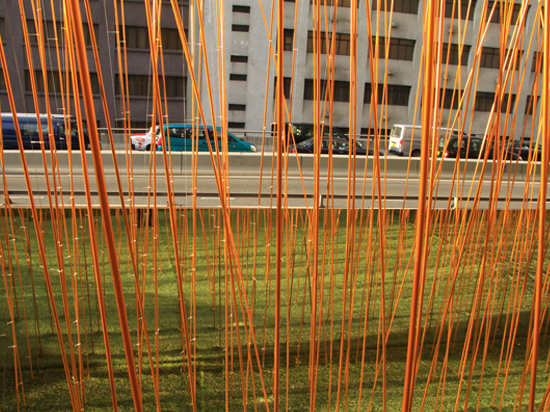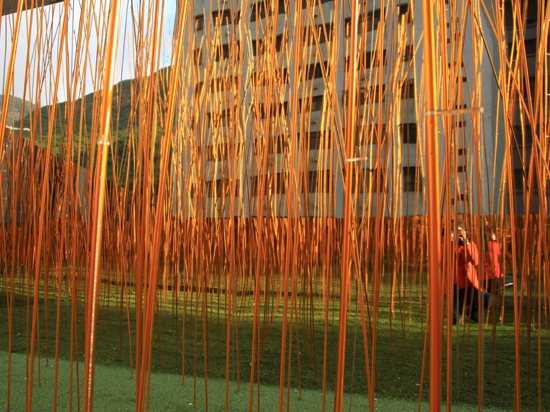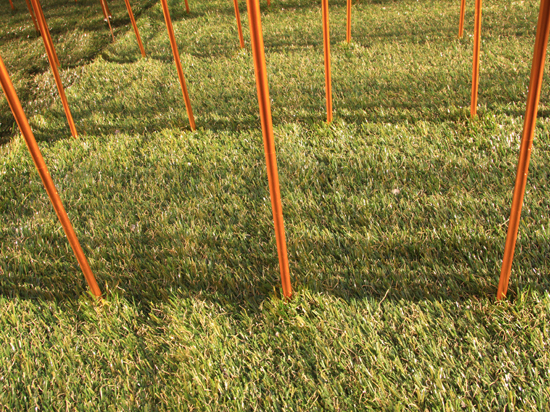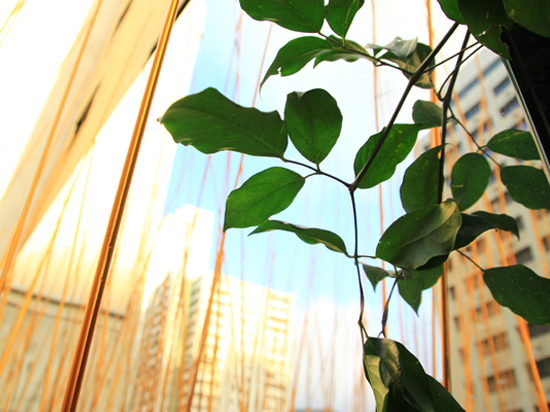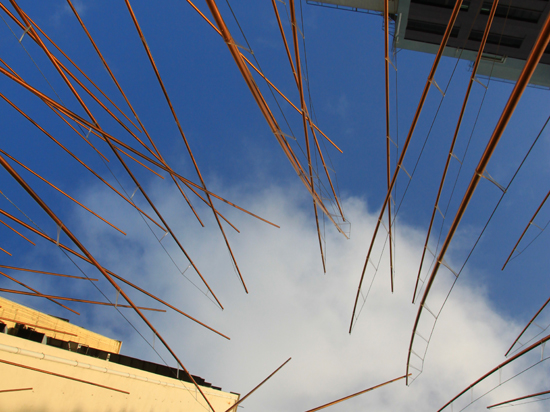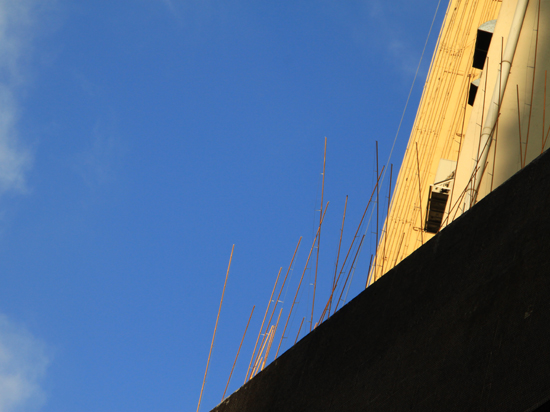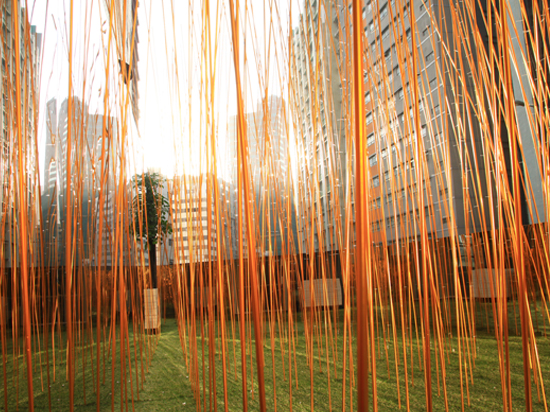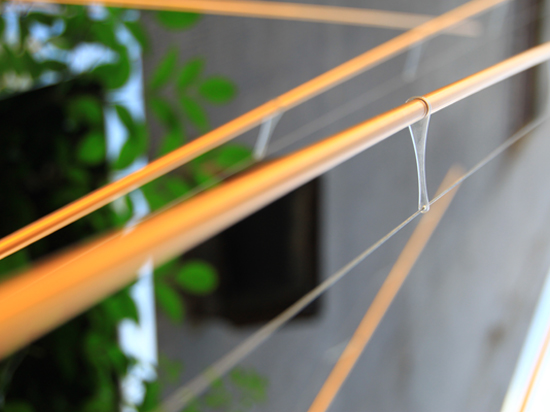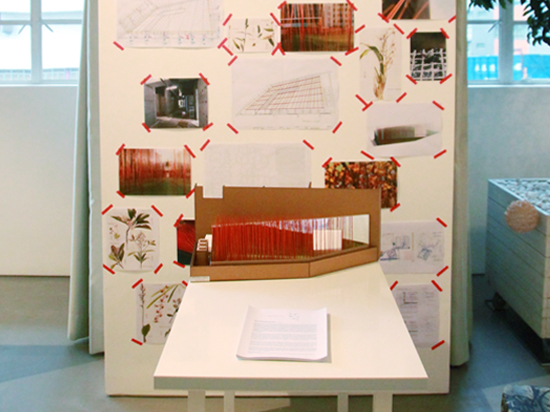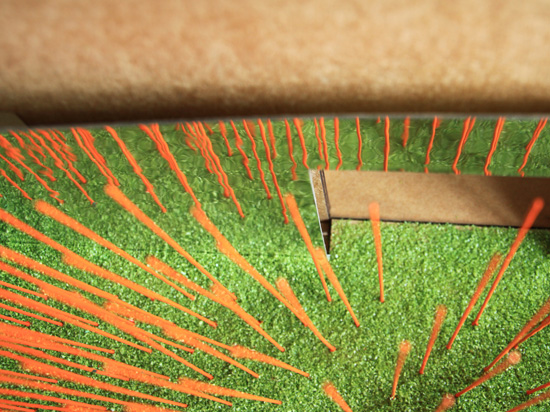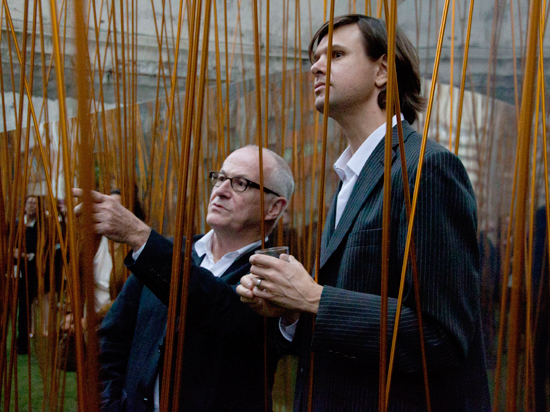- Asia Art Archive 亞洲藝術文獻庫
- Defne Ayas
- Tobias Berger
- Heman Chong 張奕滿
- Hong Kong New Music Ensemble
- Claire Hsu 徐文玠
- Intelligence Squared
- M+ Museum
- Para Site Art Space
- Yana Peel
- Alexandra A. Seno
- Tai Kwun Contemporary 大館當代美術館
- Witte de With -> Kunstinstituut Melly
ESKYIU
Industrial Forest
Industrial Forest, 2013
Aluminum, stainless steel mirror, astroturf
Located in Wong Chuk Hang, Spring Workshop inhabits a quintessential post-industrial Hong Kong landscape which is now transforming rapidly into a community of creative inhabitants occupying the factory floors. Comprised of hundreds of incredibly thin metallic bamboo poles, Industrial Forest acknowledges the origin of Wong Chuk Hang’s heritage by translating the yellow bamboo that used to grow there into a new landscape. Each filament is removable, with the potential to carve out a void from within the dense forest of landscape. Over a series of months the installation will be altered to accept significant crowds or be arranged to restrict access to the site. As an urban forest, it is configured to obscure the industrial buildings surrounding it to carefully frame the sky above. Located on the terrace of Spring Workshop, it aligns with the datum set by the traffic on the neighbouring elevated highway. Viewing the installation from the highway has a hypnotic effect, as the forest appears to simultaneously blend into and be displaced by the industrial landscape surrounding it.
Along the walls of the terrace is a mirrored surface that falsely duplicates and replicates the field of geometric poles, providing the illusion of depth and substance where there is none. The grass on the ground is completely artificial, meticulously crafted to show the imperfections of real grass, the yellowing, the patchiness, the deterioration – it was originally created to reflect the result of a long-term drought brought about by global warming. Our grass is no longer green and so neither is our fake grass, the synthetic nature mirrors the conditions of our natural environment oscillating between artifice and nature. But the manufactured grass is too perfectly imperfect, never muddied or soiled, never allowing variations with the seasons or reacting to local conditions. It is too consistent to be real.
Unlike the synthetic grass, our forest reacts to its environment. The weight of a single spectator causes the poles to bend slightly, reacting directly to the presence of the visitor. They are so slender that they blow in the wind, providing an indication of the local wind velocity and trajectory. The tip of each pole illuminates during the evening: a hazy reddish-orange colour if the pollution levels are extremely high, white for normal conditions, and a crisp blue for exceptionally clear skies. Powered by a photovoltaic panel, if the skies are too dark during the day the lights fail to illuminate at all.
Industrial Forest invites interpretation and recurrent transformation. Within the installation multiple experimental inquiries will be created, reacting to the seasonal changes. Herbal gardens with local Chinese values and symbols will be injected and experimental sound components will be added enhancements to the artificial bamboo filaments, building new dialogues to examine the complexity of artifice and nature.
Industrial Forest, by ESKYIU (2017)
Very Real Fake Nature in the Industrial Forest Installation, by Zoe Li, ArtInfo (March 5, 2013)
Design duo foster debate on the built environment, by Catherine Shaw, SCMP (May 8, 2013)
Design file: Eskyiu, by Christopher DeWolf, SCMP Post Magazine (August 18, 2013)
Acknowledgement:
Designers: Eric Schuldenfrei and Marisa Yiu.
Project Team: Maggie Hua, Enid Xuezhu Tian, Wilton Ip.
About ESKYIU
Eric Schuldenfrei and Marisa Yiu are Founding Partners of ESKYIU, a multi-disciplinary architecture studio actively integrating culture, community, art and technology. They explore how architecture intersects with issues of social sustainability, cultural landscapes and public engagement from the scale of an interactive façade to curatorial and urban scale projects. They have exhibited widely: ‘Urban Pastoral’ for the 2008 Venice Biennale; ‘Human Motor: Narratives from the Assembly Line’ in Ljubljana; Chinatown WORK an interactive public arts project commissioned by the Lower Manhattan Cultural Council; ‘Nutritious: An Aeroponic Facade’ at the Architectural Association in London. They have lectured internationally at Harvard’s AsiaGSD conference, TEDx, DLD in Moscow, V&A museum, the Asia Society, and at universities such as Nanjing, Helsinki, and Cambridge. In 2009 they curated the Hong Kong & Shenzhen Bi-City Biennale of Urbanism/ Architecture. Recently they published INSTANT CULTURE: Architecture and Urbanism as a Collective Process; designboom reviews the book as ‘a provocative deliberation that question regional values, cultural consumption, architecture, environment and global pressures faced by Hong Kong, but which apply to many urban centers’. ESKYIU has been awarded the ‘Architectural League Prize’ and Perspective’s ‘40 under 40’.
Other ongoing installations
-
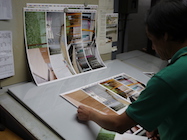 Writer / PublicationsPublication
Writer / PublicationsPublication
ESKYIU
The Industrial ForestDecember 10, 2017 -
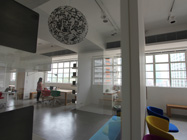 ArtistOngoing installations
ArtistOngoing installations -
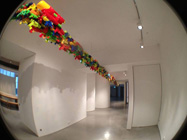 ArtistDouglas YoungInstallation
ArtistDouglas YoungInstallation -
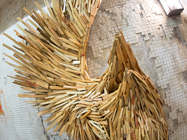 ArtistKacey WongInstallation
ArtistKacey WongInstallation -
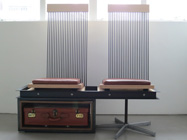 ArtistJason NogoyInstallation
ArtistJason NogoyInstallation -
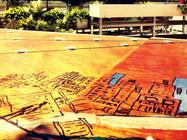 ArtistWilliam LimInstallation
ArtistWilliam LimInstallation
